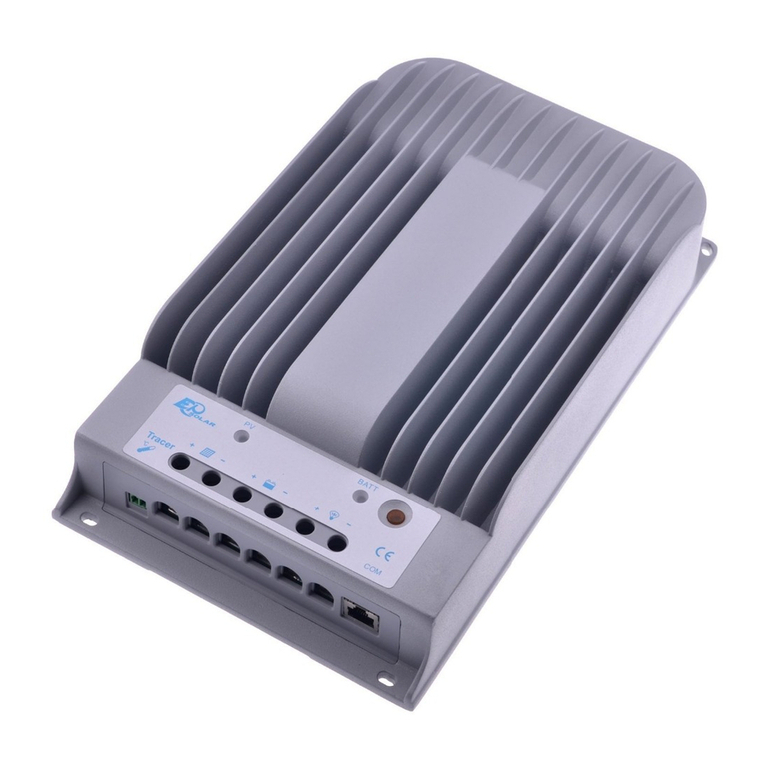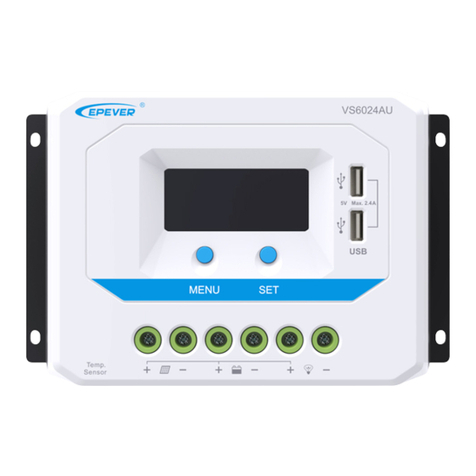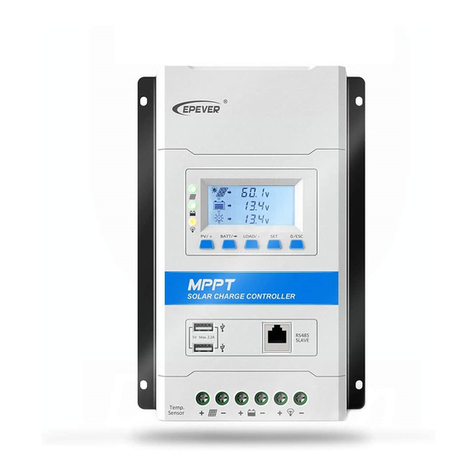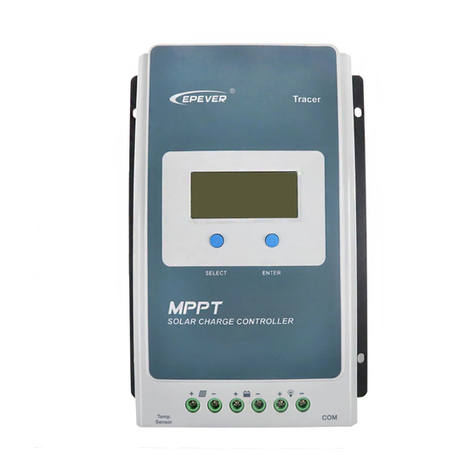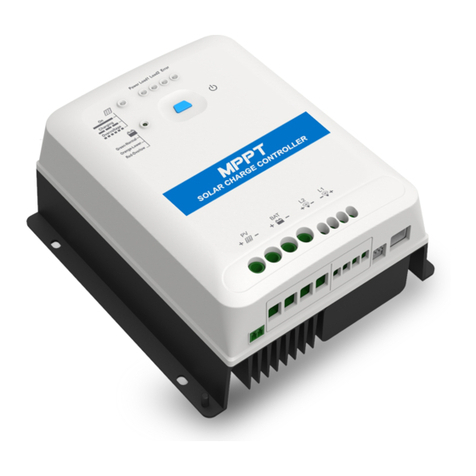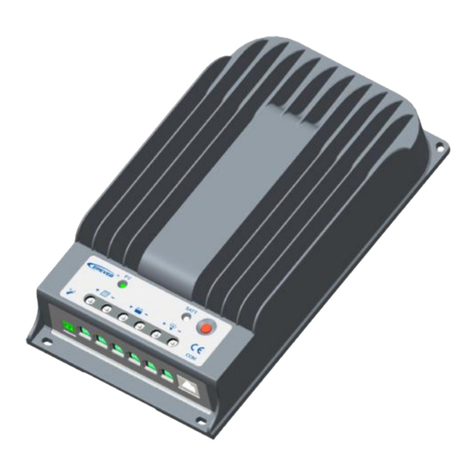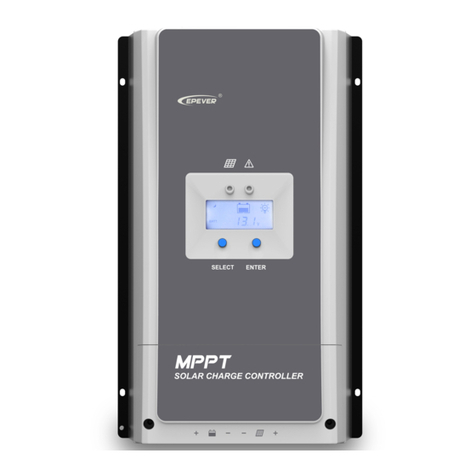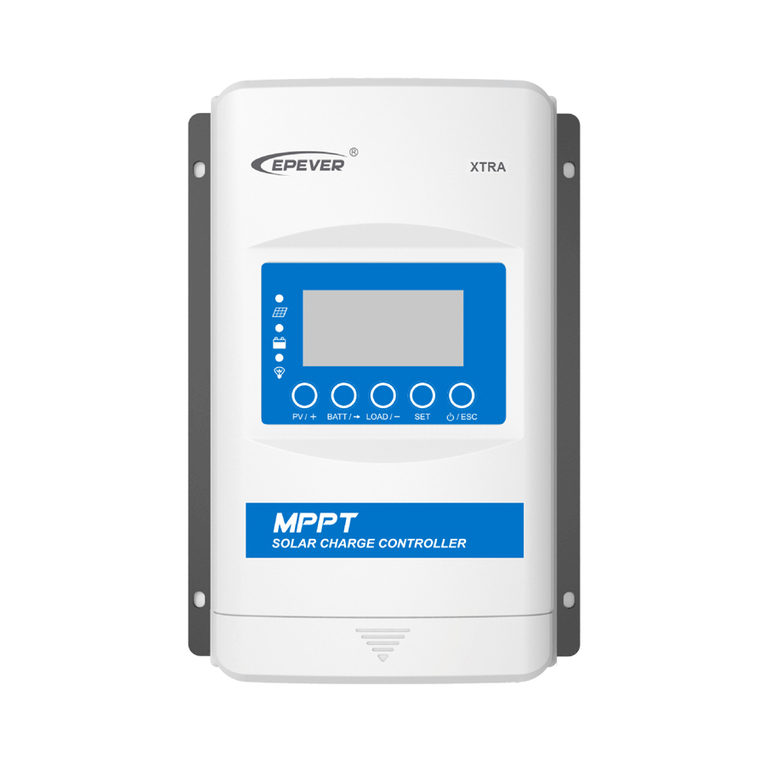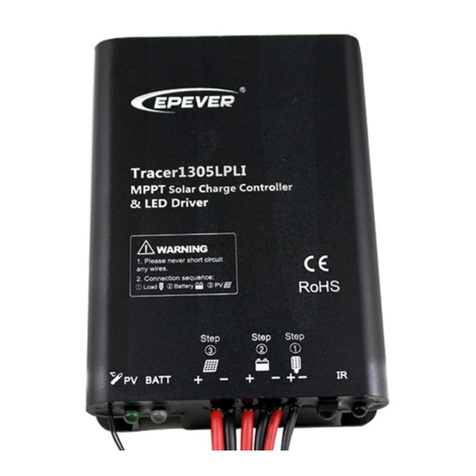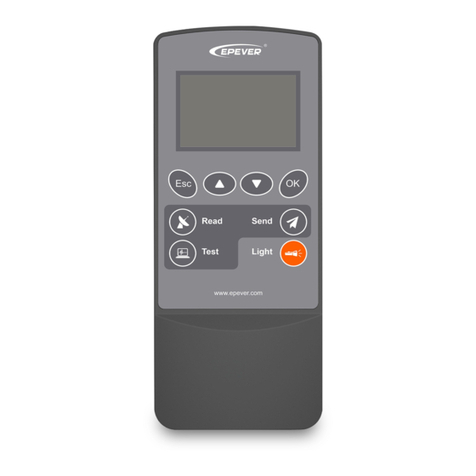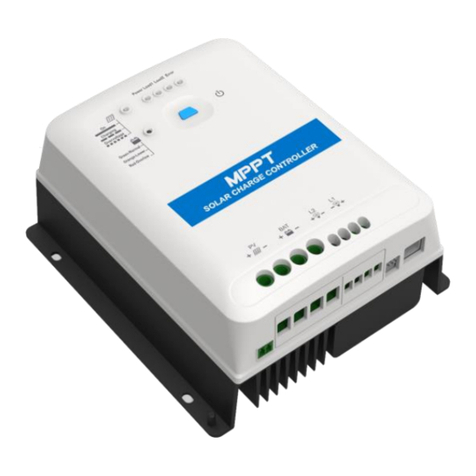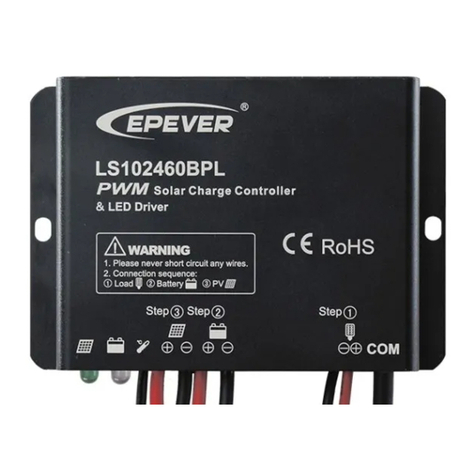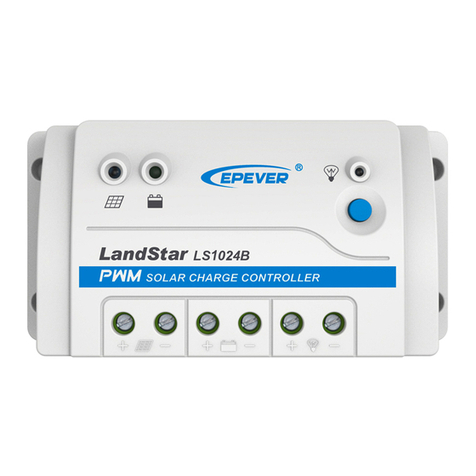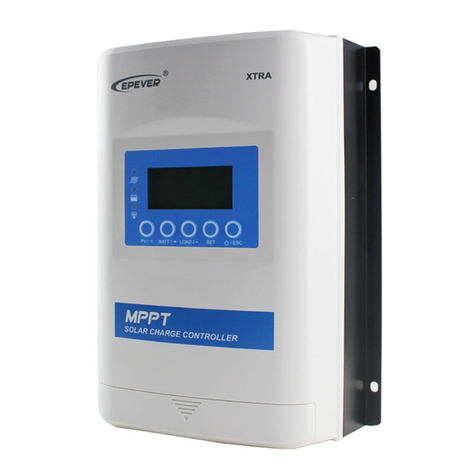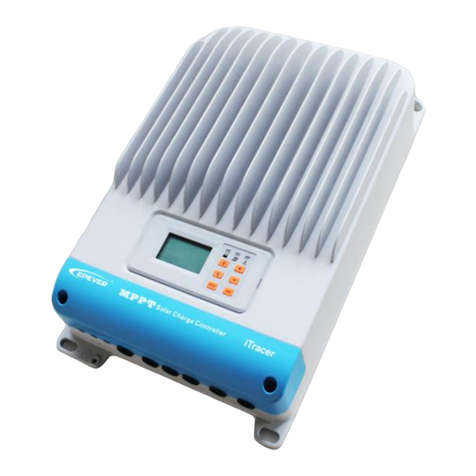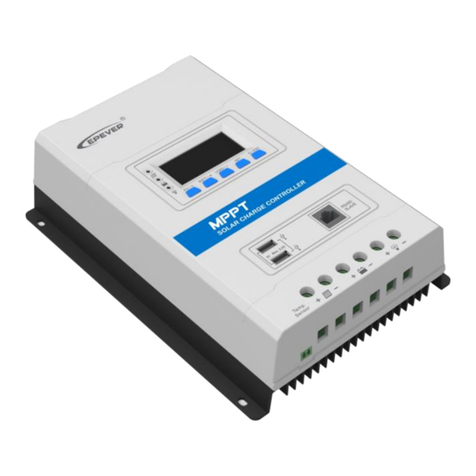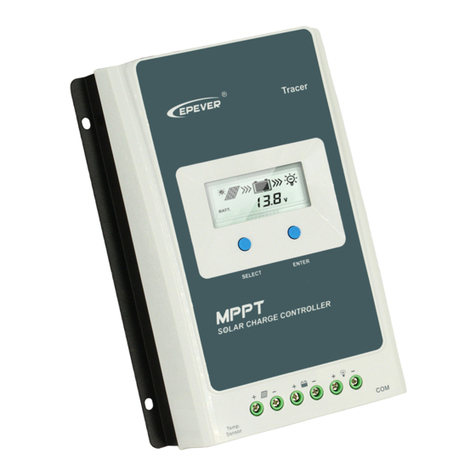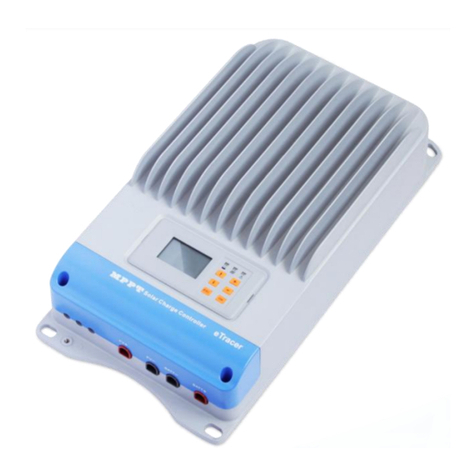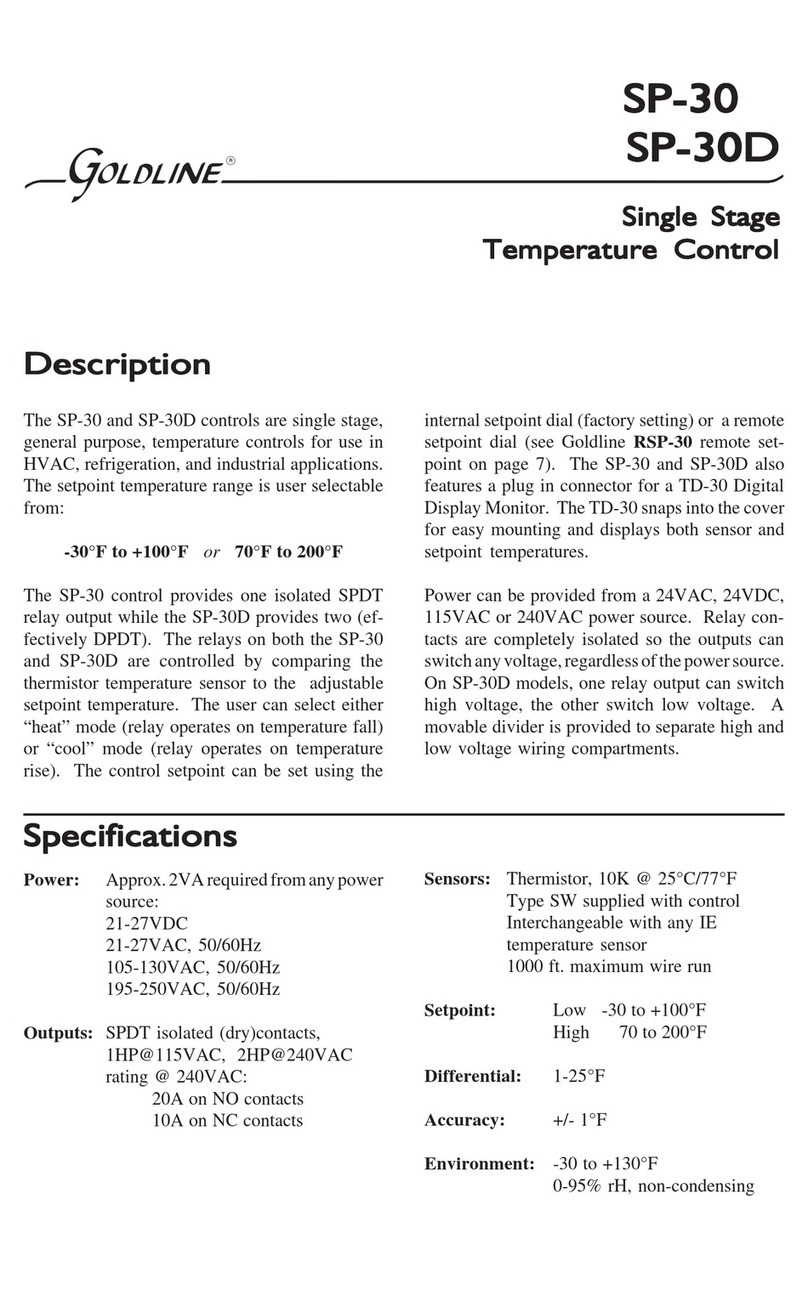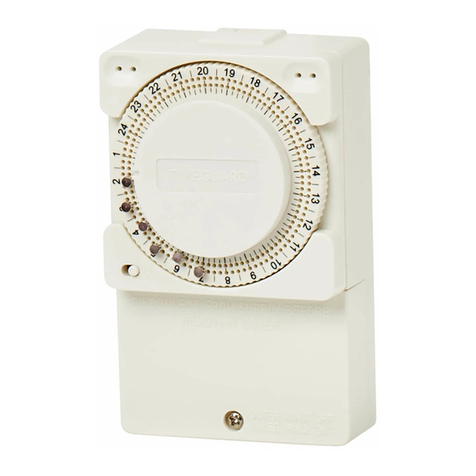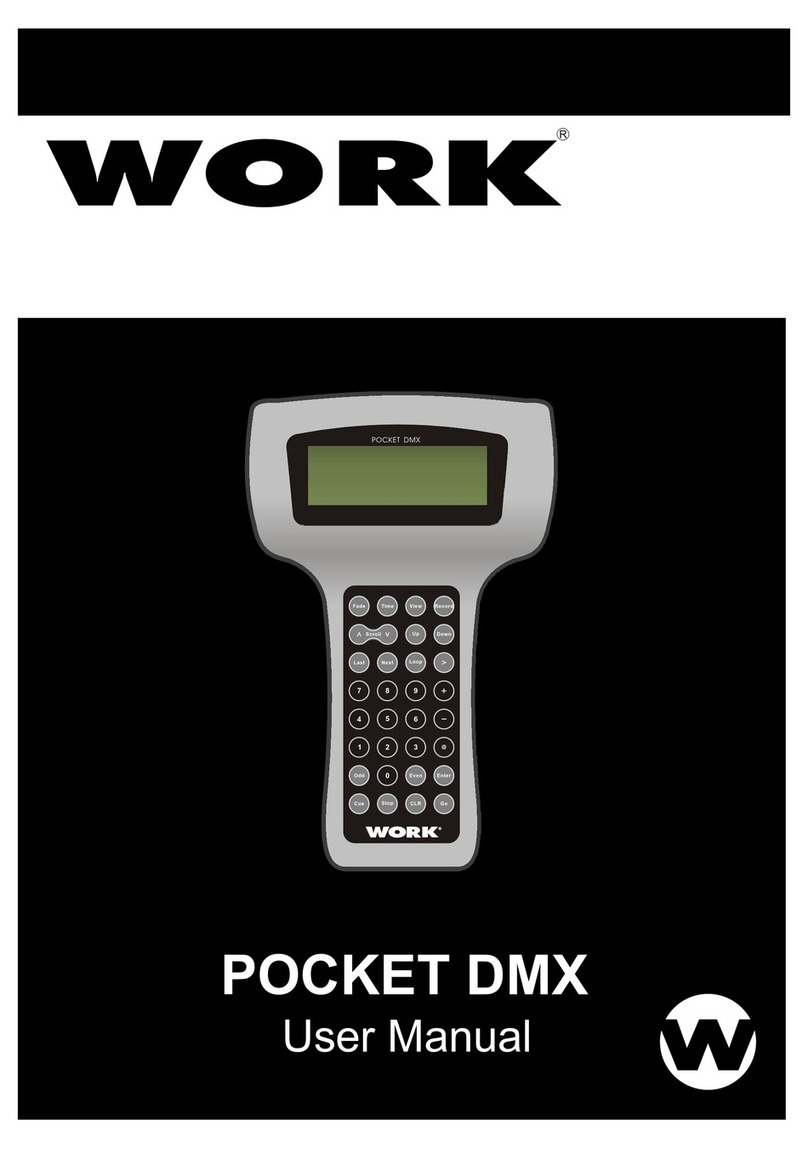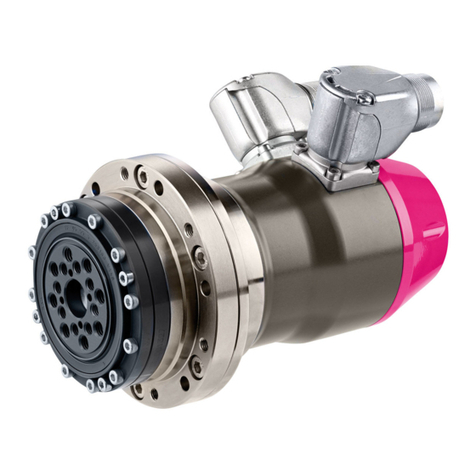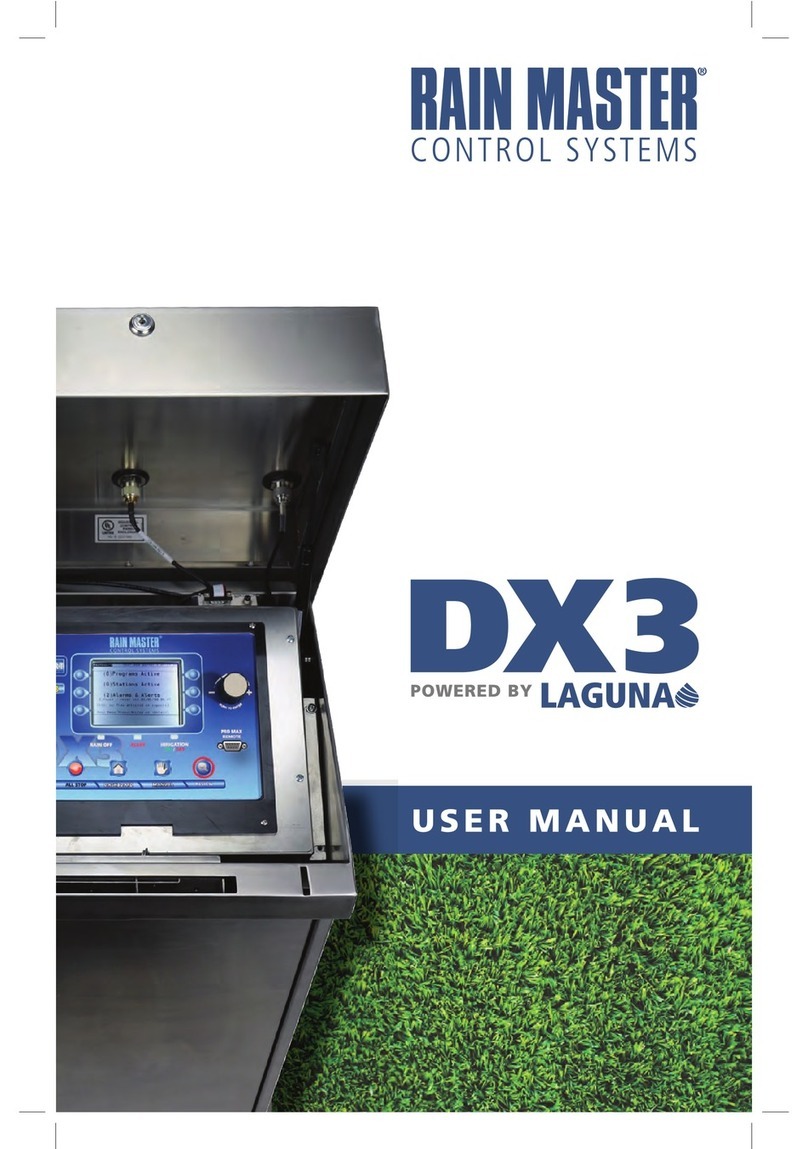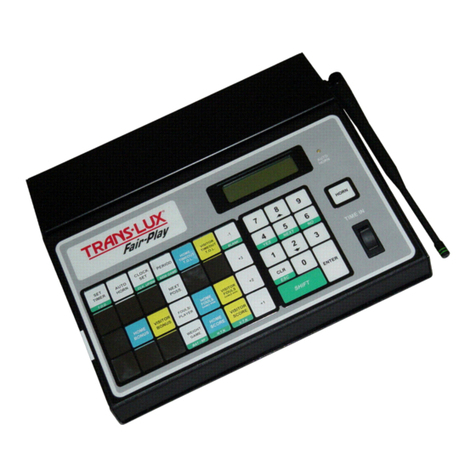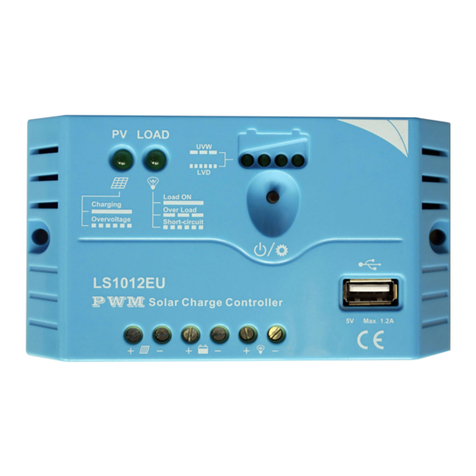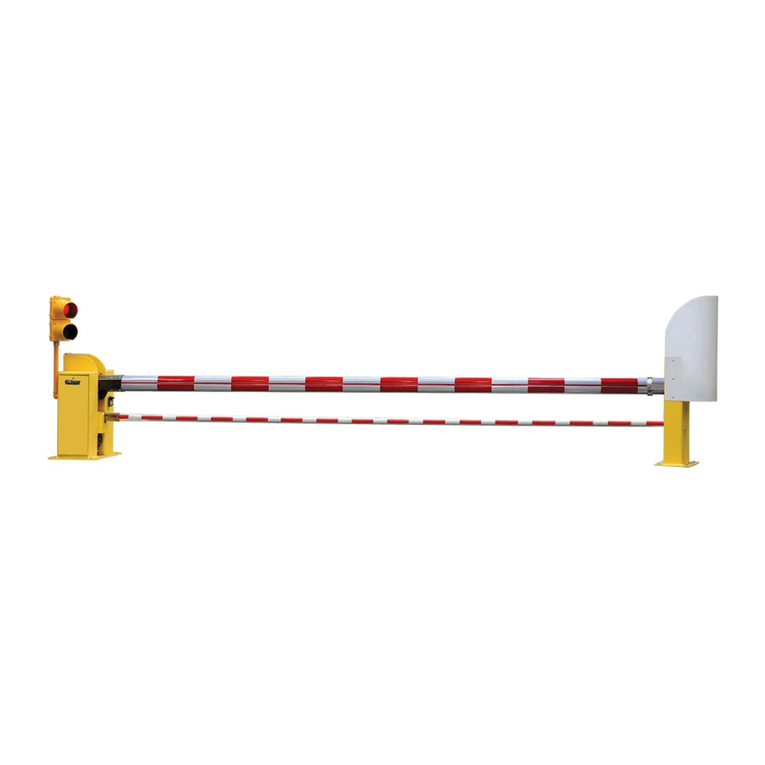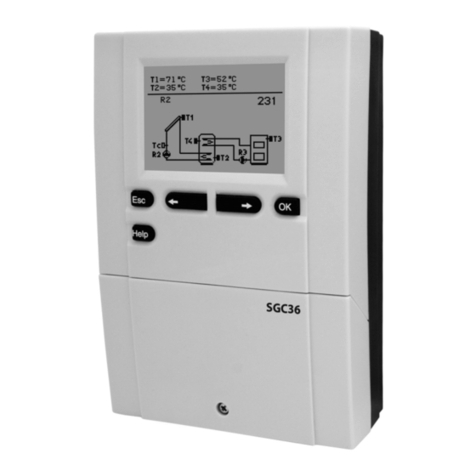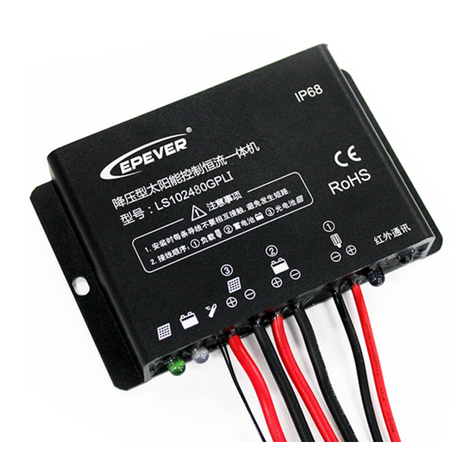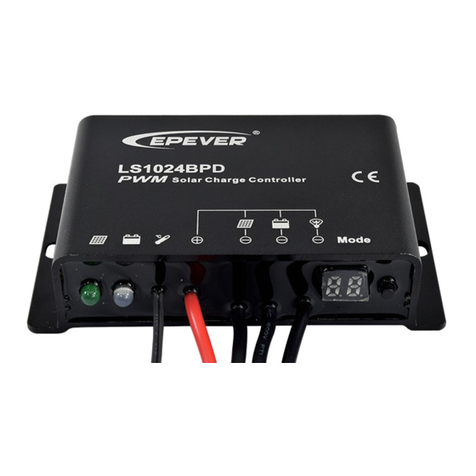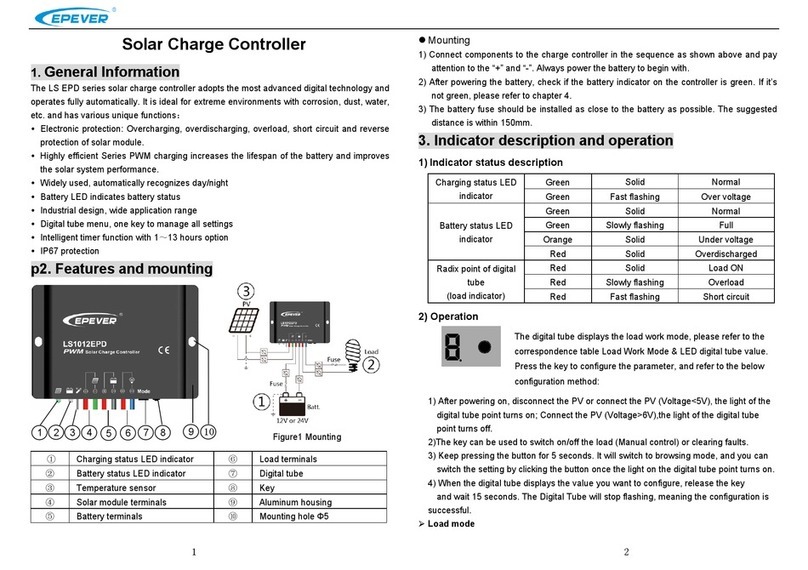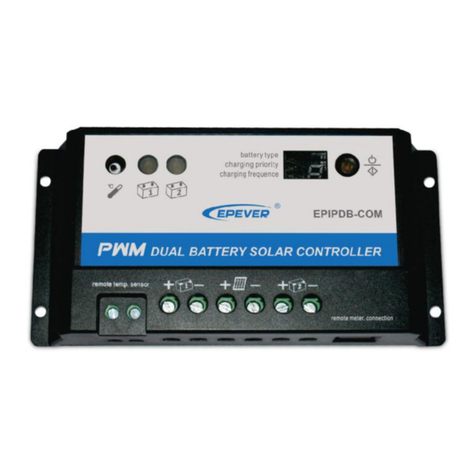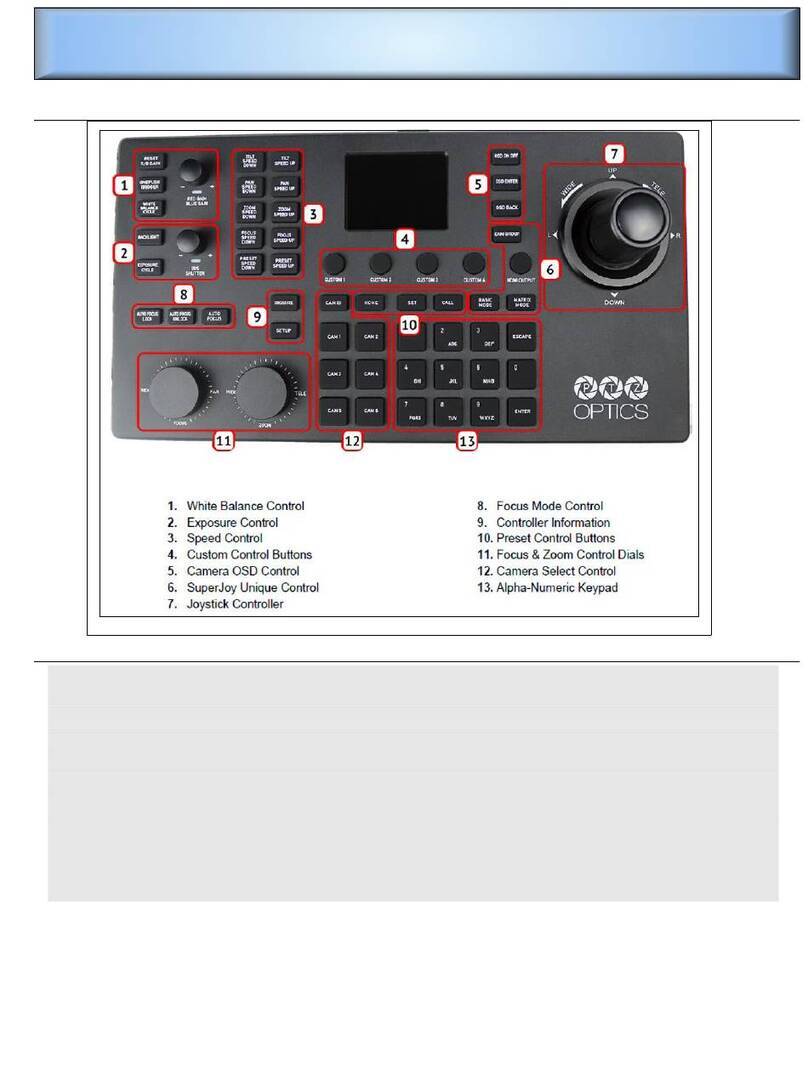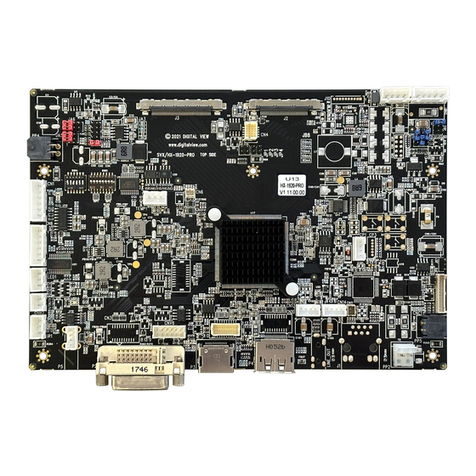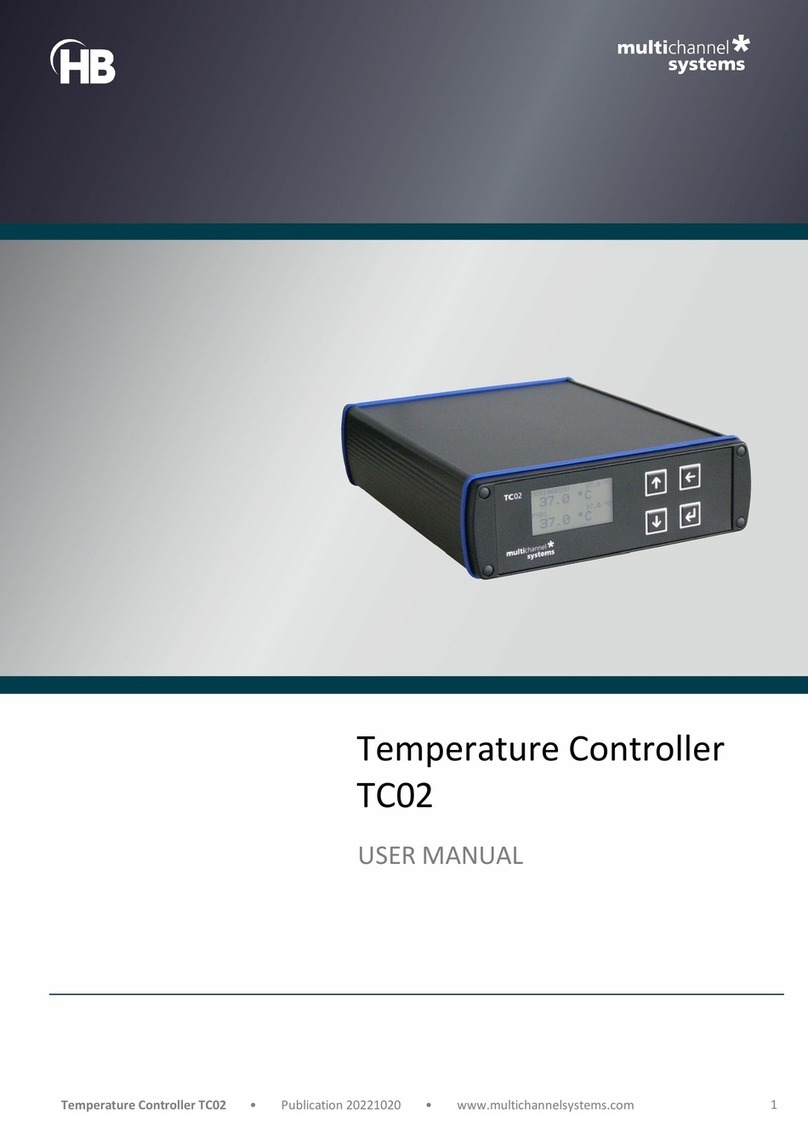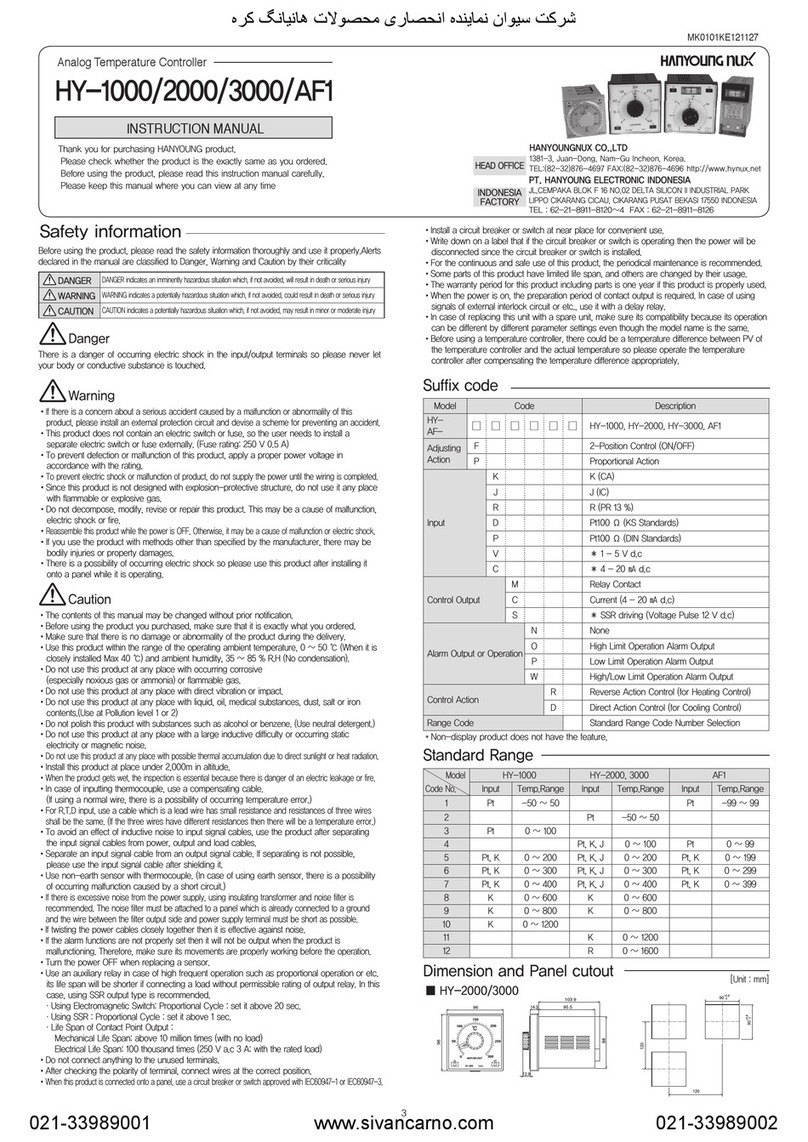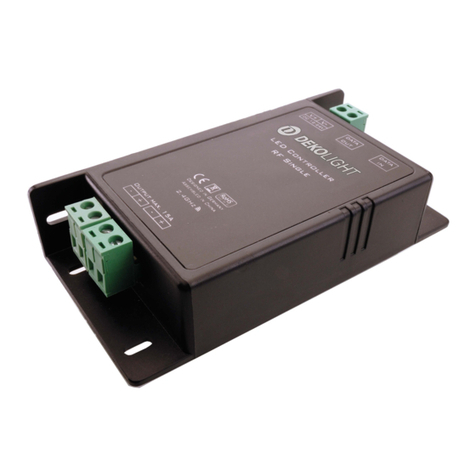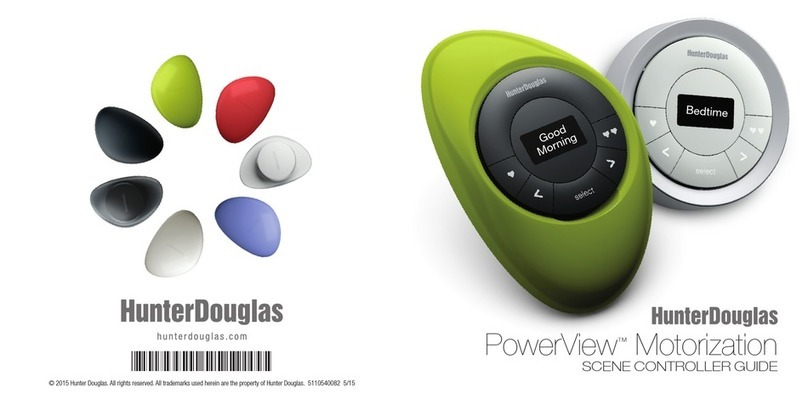
HUIZHOU EPEVER TECHNOLOGY CO., LTD. Tel:+86-10-82894896/82894112/+86-752-3889706 Website:www.epever.com
34
8. Protection
PV Over Current
The controller will limit the battery charging current to the Maximum Battery Current
rating. Therefore an oversized solar array will not operate at peak power.
PV Short Circuit
When PV short circuit is powered on or the PV input is a short circuit on low-power,
the controller will stop charging. Clear it to resume regular operation.
The controller may be damaged when the PV input is a short circuit
on a high-power.
PV Reverse Polarity
The PV can be reversely connected with a controller when:
Only the PV is connected with the controller;
The battery is positively connected, and the PV's open-circuit voltage is lower
than 85V(This requirement is only for Tracer26/39/5210BP).
The controller will be damaged when the PV array straight polarity
and the PV array's actual operating power is 1.5 times greater than
the rated charge power!
Battery Reverse Polarity
When the PV is not connecting or connecting reversed, complete protection against
reverse battery polarity, correct the wire connection to resume regular operation.
The controller will be damaged when the PV connection is correct,
and the battery connection reversed!
Battery Over Voltage
When the battery voltage reaches the set point of Over Voltage Disconnect Voltage,
the controller will stop charging the battery to protect the battery from being
overcharged to break down.
Battery Over Discharge
When the battery voltage reaches the Low Voltage Disconnect Voltage, the controller
will stop discharging the battery to protect the battery from being over-discharged to
break down.
Battery Overheating
The controller detects the environment temperature through the external temperature
sensor. If the environment temperature exceeds 65 ºC, the controller will automatically
start the overheating protection to stop working and recover below 55 ºC .
Lithium battery Low Temperature
The temperature sensor is less than the low-temperature value, and the Lithium
battery stops charging/discharging. It is higher than the low-temperature value, and
the Lithium battery starts charging/discharging.
Load Overload
If the load current exceeds the maximum load current rating 1.05 times, the controller
will disconnect the load. Overloading must be cleared up by reducing the load
and restarting the controller.
Load Short Circuit
The load will be switched off when the load short circuit (≥4 times rated current)
happens.
The controller will automatically attempt to reconnect the load 5 times. Suppose short
circuit protection still exists after the controller's 5 times attempts. In that case, the
user has to clear the short circuit, restart the controller or wait for one night-day cycle
(night time>3 hours).
Temperature sensor break down
Suppose the temperature sensor is short-circuited or damaged. In that case, the
controller shall be charging or discharging at the default temperature of 25 ºC to
prevent the battery damaged from overcharging or over-discharged.
High Voltage Transients
The controller is protected against small high voltage transients. In lightning-prone
areas, additional external suppression is recommended.
10. Troubleshooting
LED Charging indicator
turn off during daytime
when sunshine falls on
PV modules properly
Confirm that PV and battery wire
connections are correct and tight
Battery voltage
may be less
than 8.5V
Measure battery voltage with the
multi-meter. Min.8.5V can start up
the controller
Battery LED indicator
green fast Flashing
Check if the battery voltage is higher
than OVD, and disconnect the PV
Battery LED indicator
red
When the battery voltage is restored
to or above the LVR point (low
voltage reconnect voltage), the load
will recover
Battery LED indicator
red flashing
The controller will automatically turn
the system off. But while the
temperature decline to be below 50
ºC, the controller will resume.
①Please reduce the number of
electric equipment.
②Restart the controller.
③wait for one night-day cycle (night
time>3 hours).
①Check carefully loads connection,
clear the fault.
②Restart the controller.
③wait for one night-day cycle (night
time>3 hours).
①When it is overload or short circuit, the load has 5 times auto-recovery output
function, which each time delay respectively 5s, 10s, 15s, 20s, 25s.
11. Disclaimer
This warranty does not apply under the following conditions:
Damage from improper use or use in an unsuitable environment.
PV or load current, voltage, or power exceeds the rated value of the controller.
The controller's working temperature exceeds the limit working environment
temperature.
User disassembly or attempted to repair the controller without permission.
The controller is damaged due to natural elements such as lighting.
The controller is damaged during transportation and shipment.
9. Technical Specifications
Any changes without prior notice! Version number:V3.4
12/24VDC Auto( Lithium battery cannot automatically identify system voltage)
Battery input voltage range
Rated charge/discharge current
Max. PV open circuit voltage
60V( at minimum operating environment temperature )
46V( at 25℃environment temperature )
100V( at minimum operating environment temperature )
92V( at 25℃environment temperature )
( Battery voltage+2V)~36V
( Battery voltage+2V)~72V
Lead-acid battery: Sealed(Default) / Gel / Flooded/User; Lithium battery:LiFePO4/ Li-NiCoMn/User
Equalize Charging Voltage
Sealed :14.6V, Gel:No, Flooded:14.8V, User:9-17V (×2/24V)
Sealed :14.4V, Gel:14.2V, Flooded:14.6V, User:9-17V (×2/24V)
Sealed/Gel/Flooded:13.8V, User:9-17V (×2/24V)
Low Voltage Reconnect
Voltage
Sealed/Gel/Flooded:12.6V, User:9-17V (×2/24V)
Low Voltage
Disconnect Voltage
Sealed/Gel/Flooded:11.1V, User:9-17V (×2/24V)
LiFePO4:14.5V, Li-NiCoMn:12.5V, User:9-17V (×2/24V)
Low Voltage
Reconnect Voltage
LiFePO4:12.8V, Li-NiCoMn:10.5V, User:9-17V (×2/24V)
Low Voltage
Disconnect Voltage
LiFePO4:11.1V, Li-NiCoMn:9.3V, User:9-17V (×2/24V)
Temperature compensation
coefficient
-3mV/℃/2V( Lithium battery don't have temperature compensation coefficient)


